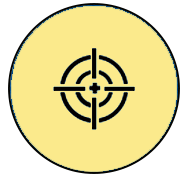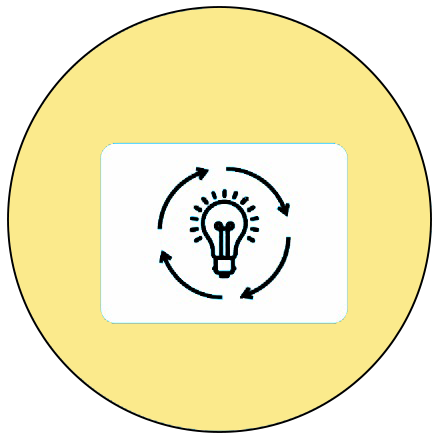
Numbers 500 to 999
Week 4
Learning Outcome
Compares two 3-digit numbers up to 999 and uses vocabulary like greater than, lesser than, and equal to.
 Objective
Objective
Children will compare two 3-digit numbers (up to 999) using symbols: > (greater than), < (less than), and = (equal to).
 Prerequisites
Prerequisites
- Children can compare any two numbers that lie between 100 and 500.
- The teacher can have a simple check for understanding at the beginning of the lesson by asking the children to compare big and small sizes of objects.
 Pre-teach Vocabulary
Pre-teach Vocabulary
Children should be familiar with terms such as greater than, lesser than, and equal to.
Introduction: Let Us Compare
Materials required:
- Base ten blocks (hundreds, tens, ones cut-outs or manipulatives)
- Flashcards with 3-digit numbers (up to 999)
- Number line (large floor version or individual strips)
- Greater than/less than sign cards (visual crocodile mouths or symbols)
- Whiteboard/chart
- Comparison mats or charts
- Notebooks or worksheets
Teaching Method: I Do—We Do—You Do
I Do (Teacher Models):
- Display two numbers (e.g., 589 and 576) on the board.
- Use base ten blocks to build each number:
- Show 5 hundred blocks, 8 tens, and 9 ones for 589
- Then show 5 hundred blocks, 7 tens, and 6 ones for 576
- Talk aloud as you compare hundreds first, then tens, then ones.
- Place the greater than / less than sign between them:
589 > 576 because 8 tens is more than 7 tens. - Reinforce with a number line. Point and bring the attention to where both numbers fall to show which is further.
We Do (Guided Practice):
- Call on volunteers to come up and build two different numbers using base ten cutouts.
- As a class, discuss:
- Which number is greater?
- Which place value helped you decide?
- Use the number line to double-check.
- As a class, hold up the correct symbol card (> < =) to compare.
You Do (Independent Practice or Group Practice):
- Children work in pairs or small groups.
- Each group draws two number cards, builds both using base ten cutouts, and then compares them using the correct symbol on a mat.
- They write the comparison in their journals, e.g., 945 > 867.
Video: Let’s compare – Coming soon
ISL Video: Let’s compare – Coming soon
LTM: DIY Flashcards – Coming soon
LTM: Printable Flashcards – Coming soon
 Note to the teacher: The teacher can use short stories for comparing two numbers.
Note to the teacher: The teacher can use short stories for comparing two numbers.
Story 1: Airport Luggage Tag
Story Prompt:
Leo is matching luggage to tag numbers at the airport. Each bag has a number between 950 and 965. He needs to find which one comes first and which one comes last.
Comparison Questions:
- Which tag comes earlier: 951 or 955?
- Leo finds tags 960 and 960. Are they equal?
- Is 953 greater than 962?
Story 2: School Attendance Numbers
Story Prompt:
Maya is checking attendance numbers at school. Each child has a number between 840 and 855. She’s arranging them from the smallest to the biggest.
Comparison Questions:
- Maya sees numbers 843 and 849. Which is the greater number?
- Which number is less than 840?
- If two children have the number 847, are their numbers equal?
Story 3: Grocery Shopping with Dad
Story Prompt:
Zain is helping his dad at the shop. The receipt numbers for various items ranged from 630 to 645. He wants to sort the items from least expensive to most expensive based on their numbers.
Comparison Questions:
- Zain sees items numbered 640 and 641. Which is the greater number?
- Are 635 and 639 equal? Why or why not?
Story 4: Birthday Party Balloons
Story Prompt:
Ana is decorating for her birthday party. Each balloon has a number on it from 501 to 515 based on size. She wants the biggest balloons to go at the front of the arch and smaller ones at the end.
Comparison Questions:
- Ana has balloon 508 and balloon 511. Which one has the greater number?
- Balloon 503 is next to balloon 506. Which number is smaller?
Video: Story time – Coming soon
ISL Video: Story time – Coming soon
Activity 1: Ring Around and Compare
Objective: To compare the numbers between the pairs.
Importance of the activity for children:
Helps in developing:
- Gross motor skills (Moving around in circle)
- Fine motor skills (Hand-eye coordination)
- Cognitive skills (Problem-solving, concentration)
- Social skills (Cooperation, waiting for their turn, playing together)
- Language skills (Concepts like bigger, smaller, and equal to)
- Emotional skills (Builds confidence in numeracy, promotes a sense of achievement that boosts self-esteem, and encourages pride in learning new skills)
Resources required:
Number cards from 500 to 999 (any 20 cards)
Setting for the activity:
The activity can be done indoors or outdoors depending on the space availability.
Type of activity: Pair activity
Preparation of activity:
The teacher will make sure that the required number cards are available.
Role of the teacher: Demonstrator, observer and facilitator
Procedure:
- Divide the class into two equal groups.
- Give each child a number card.
- Designate one group as the inside circle and the other group as the outside circle.
- With their number card, each child will stand in their circle. The inside circle will face out, and the outside circle will face in.
- Play a music piece. When the music starts playing, each circle moves to the right. This means that the circles will be moving in opposite directions.
- When the music stops, children pair up with the classmate facing them.
- They will observe their numbers and compare by saying number X is greater than Y.
For example, if the number card of one child in a pair is 875 and the number card of the other child in that pair is 950, they have to say 950 is greater than 875 or 875 is less than 950. - The teacher will spot-check answers and help as needed.
The same procedure can be continued with other numbers.
Observations:
During the activity, the teacher will observe the following:
- Whether children are able to correctly identify and read their 3-digit numbers.
- How effectively children are comparing the two numbers using correct vocabulary such as ‘greater than’, ‘lesser than’, or ‘equal to’.
- Whether children are using visual cues such as the number size or place value to make their comparison.
Suggested Variations in the activity:
- When the music stops, instead of just pairing up, 3 or 4 groups of children can form a mini-circle and compare their numbers. They must then arrange themselves physically in an order from the smallest number to the largest (or vice versa). Each group shares the order aloud with the class.
- After pairing, children can compare the numbers and show their answer using: Hands (e.g., raise both hands for ‘greater than’), arrows on the floor or mini whiteboards, or forming < or > with their arms or bodies.
This variation encourages:
- Collaborative problem-solving
- Number comparison skills
- Oral communication and confidence
Conclusion:
Children can identify the partner’s number and compare it with their number correctly.
Video: Ring around and compare – Coming soon
ISL Video: Ring around and compare – Coming soon
Activity 2: Fun with Collage
Objective:
To compare the numbers and make a collage of an asked number.
Importance of the activity for children:
Helps in developing:
- Gross motor skills (Holding the paper and sticking)
- Cognitive skills (Comparing the numbers)
- Social skills (Cooperation, waiting for their turn)
Resources required:
- A4 sheet where the pair of numbers printed in 3D collage design (e.g., 456 & 365)
Note: Different pairs of numbers can be printed on different sheets. - Newspaper bits/marble paper bits/cereals/pulses
- Fevicol
Setting for the activity:
The activity can be done indoors or outdoors depending on the space availability.
Type of activity: Individual activity
Preparation of activity:
The teacher will make sure that the required resources are available.
Role of the teacher: Demonstrator, observer and facilitator
Procedure:
- The teacher will give a sheet of paper where any 1 pair of numbers written is chosen from 100 to 500 in a 3-D collage design.
- Every child will get a sheet of paper with a pair of numbers written on it and be provided with newspaper bits, marble paper bits, pulses, and cereals.
- The children are then instructed to identify the smallest number and do the collage work using newspaper bits, marble paper bits, pulses, and cereals.
Observation:
While the children are engaged in the activity, the teacher observes if the children are able to do the collage work as instructed. The teacher may note down her observations for the feedback.
Suggested variations in the activity:
- Use two types of collage materials (e.g., pulses for the smaller number, newspaper bits for the greater number). Children can decorate both the numbers on the sheet provided using the correct material for each.
- Children receive only one 3-digit number and must find a classmate whose number is higher or lower to complete a collage pair.
After comparing, they choose which number to collage based on the teacher’s instruction (e.g., ‘collage the lower number’).
Conclusion:
Children learn to compare numbers that lie in-between 500 and 999.
Video: Fun with collage – Coming soon
ISL Video: Fun with collage – Coming soon
Assessment
The teacher can provide a practice worksheet and assessment worksheet to assess the children’s understanding of the concept of comparing numbers.
Practice Worksheet – Coming soon
Practice Worksheet (Enlarged) – Coming soon
Assessment Worksheet- Coming soon
Assessment Worksheet (Enlarged) – Coming soon
Check list for teacher:
| Activity | Yes | No | Sometimes |
| Children can: | |||
| Compare any two 3-digit numbers (up to 500) | |||
| Do collage work in groups | |||
| Use the symbols > (greater than), < (less than), and = (equal to) in appropriate places | |||
| Complete the activities in the given time | |||
| Do the activities independently | |||
| Express verbally and through actions, expressions, or gestures | |||
| Enjoy team work, appreciate others, and are willing to learn from others |
Home Activity
Objective:
To compare two numbers by choosing the correct sign through an online fun activity.
Fun activity: Word Wall – Choose the correct symbol – Coming soon
Cross-Curricular Connection:
Drama class: Role Play
In pairs or in small groups, children can act out a skit where characters (animals, shopkeepers, etc.) compare quantities. One quantity is always greater while the other is smaller. Children can dramatise the dialogue using large number cards.
Language Class: Read Aloud Story
Adaptations for addressing learner variability: Adaptations and strategies – Coming soon
Teacher Resource Document – Coming Soon
| Source and Attribution of images: All images used in the above Assets and Aids are originally created. |
| This digital material has been developed by the Sri Sathya Sai Vidya Vahini Inclusive Education Project, a unit of Sri Sathya Sai Central Trust, Prasanthi Nilayam, as a collaborative offering in the service of our nation. |